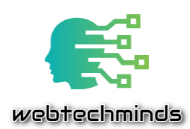What is AI (Artificial Intelligence)?

Artificial Intelligence (AI) refers to the ability of machines, particularly computer systems, to perform tasks that typically require human intelligence. This includes processes such as understanding natural language, recognizing speech, and interpreting visual data. AI applications include expert systems, natural language processing (NLP), speech recognition, and machine vision.
As interest in AI has grown, many companies have started to highlight how their products incorporate AI technologies. However, what is often labeled as “AI” may actually involve established technologies like machine learning.
AI involves specialized hardware and software to develop and train machine learning algorithms. While no single programming language is exclusive to AI, Python, R, Java, C++, and Julia are commonly used by AI developers.
How Does AI Work?
AI systems operate by processing large volumes of labeled training data to identify patterns and correlations. These patterns are then used to make predictions about future outcomes.
For example:
- An AI chatbot can learn to generate natural-sounding conversations by analyzing numerous text examples.
- An image recognition system can identify and describe objects in images by examining millions of examples.
Recent advancements in generative AI techniques have enabled the creation of realistic text, images, music, and other media.
Key aspects of AI programming include:
- Learning: Acquiring data and creating algorithms to convert it into useful information.
- Reasoning: Selecting the appropriate algorithm to achieve a desired outcome.
- Self-Correction: Continuously refining algorithms to enhance accuracy.
- Creativity: Utilizing techniques like neural networks and statistical methods to generate new content.
Differences Among AI, Machine Learning, and Deep Learning
The terms AI, machine learning, and deep learning are often used interchangeably, but they refer to different concepts:
- AI: A broad field encompassing various technologies that simulate human intelligence, including both machine learning and deep learning.
- Machine Learning: A subset of AI focused on enabling software to learn patterns and make predictions based on historical data.
- Deep Learning: A specialized area within machine learning that uses layered neural networks to replicate brain functions. It has driven significant advancements in AI, such as autonomous vehicles and sophisticated language models like ChatGPT.
Why is AI Important?
AI has the potential to revolutionize various aspects of life, work, and leisure. It has been effectively utilized in business for tasks traditionally handled by humans, including customer service, fraud detection, and quality control.
Advantages of AI include:
- Efficiency: AI can handle repetitive and data-intensive tasks more quickly and accurately than humans.
- Insights: By processing large datasets, AI provides valuable insights that might otherwise be overlooked.
- Innovation: AI has led to new business models and opportunities, such as ride-sharing services exemplified by Uber.
Major companies, including Alphabet, Apple, Microsoft, and Meta, use AI to enhance their operations and gain a competitive edge. For instance, Google’s search engine relies heavily on AI, and Waymo, a subsidiary of Alphabet, began as a division focused on self-driving technology.
Advantages and Disadvantages of Artificial Intelligence
Advantages:
- Precision: AI excels in detail-oriented tasks, such as early cancer detection in oncology.
- Efficiency: It speeds up data processing, benefiting sectors like finance and healthcare.
- Productivity: AI improves safety and efficiency in manufacturing by automating hazardous tasks.
- Consistency: AI ensures uniform results and adapts to new information through continuous learning.
- Customization: Enhances user experience by personalizing content on digital platforms.
- Availability: Operates around the clock, providing uninterrupted customer service.
- Scalability: Handles increasing data volumes and workloads effectively.
- Research and Development: Accelerates discovery in fields like pharmaceuticals and materials science.
- Sustainability: Monitors environmental changes and manages conservation efforts.
- Process Optimization: Streamlines complex processes in various industries.
Disadvantages:
- High Costs: Developing and maintaining AI systems can be expensive, with significant costs for infrastructure and ongoing operations.
- Technical Complexity: Requires advanced technical expertise for development, operation, and troubleshooting.
- Talent Gap: There is a shortage of skilled professionals in AI and machine learning.
- Algorithmic Bias: AI systems can perpetuate and even amplify biases present in their training data. For instance, a recruitment tool developed by Amazon showed gender bias by favoring male candidates due to imbalances in the tech industry.
AI continues to evolve, offering new capabilities while also presenting challenges that need to be addressed. Understanding both the benefits and limitations of AI is crucial for leveraging its potential effectively.
AI: Challenges and Developments
Challenges of AI
- Difficulty with Generalization AI models often excel at specific tasks they are trained on but struggle with new or unfamiliar scenarios. This limitation means that AI systems can be rigid and require entirely new models for different tasks. For instance, an NLP model trained on English text may perform poorly with texts in other languages unless it undergoes extensive retraining. Efforts to improve generalization, such as domain adaptation and transfer learning, are ongoing research areas.
- Job Displacement The rise of AI technologies can lead to job loss as companies increasingly automate tasks previously done by humans. For example, some copywriters have been replaced by large language models (LLMs) like ChatGPT. While AI may create new job opportunities, these might not align with the displaced roles, raising concerns about economic inequality and the need for reskilling.
- Security Vulnerabilities AI systems face various cyber threats, such as data poisoning and adversarial attacks. Hackers might extract sensitive data from AI models or trick them into producing incorrect outputs. This is especially problematic in sectors like finance and government, where security is paramount.
- Environmental Impact The infrastructure required for AI operations, including data centers and networks, consumes significant energy and water, contributing to its carbon footprint. Training and running AI models, particularly large generative models, can have a considerable environmental impact due to high computational demands.
- Legal Issues AI introduces complex privacy and legal questions, especially with evolving regulations that vary by region. The use of AI to analyze personal data poses privacy risks, and the legal implications of AI-generated content, particularly regarding copyrighted material, are still being defined.
Strong AI vs. Weak AI
- Narrow (Weak) AI Narrow AI refers to systems designed for specific tasks and cannot generalize beyond their programmed functions. Examples include virtual assistants like Siri and Alexa, and recommendation systems on platforms like Spotify and Netflix.
- General (Strong) AI General AI, or artificial general intelligence (AGI), which does not yet exist, would be capable of performing any intellectual task a human can. It would require reasoning across various domains and handling complex problems not specifically programmed for, using approaches like fuzzy logic to manage uncertainty. The creation and implications of AGI are still debated, and current AI technologies, including advanced LLMs, do not possess human-like cognitive abilities.
Types of AI
- Reactive Machines These AI systems have no memory and are task-specific. An example is IBM’s Deep Blue, which could play chess but lacked the ability to use past experiences to inform future moves.
- Limited Memory AI systems with limited memory can use past experiences to improve decision-making. Examples include certain functions in self-driving cars that utilize historical data for navigation.
- Theory of Mind This theoretical AI would understand and interpret human emotions and intentions, a capability necessary for integrating AI into roles traditionally occupied by humans. This type of AI does not yet exist.
- Self-Awareness AI systems with self-awareness would possess a sense of self and consciousness. This type of AI is purely hypothetical and does not currently exist.
Examples of AI Technology and Their Applications
- Automation AI enhances automation by expanding the range and complexity of tasks that can be automated. Robotic Process Automation (RPA) uses AI to adapt to new data and manage more complex workflows, improving efficiency in data processing tasks.
- Machine Learning Machine learning involves teaching computers to learn from data and make decisions without explicit programming. It includes:
- Supervised Learning: Trains models on labeled data to recognize patterns and predict outcomes.
- Unsupervised Learning: Identifies underlying relationships in unlabeled data.
- Reinforcement Learning: Models learn by acting and receiving feedback.
- Semi-Supervised Learning: Combines labeled and unlabeled data to improve learning accuracy.
- Computer Vision Computer vision teaches machines to interpret visual information from images and videos. Applications include object recognition, medical image analysis, and industrial automation. Machine vision, a subset of computer vision, focuses on analyzing camera data in manufacturing contexts.
- Natural Language Processing (NLP) NLP involves processing and understanding human language. Applications include translation, speech recognition, and sentiment analysis. Examples include spam detection and advanced LLMs like ChatGPT and Anthropic’s Claude.
- Robotics Robotics involves designing and operating robots to perform tasks that are difficult or dangerous for humans. AI integration enhances robots’ capabilities, allowing them to make autonomous decisions and adapt to new situations. Applications range from manufacturing to space exploration.
- Autonomous Vehicles Autonomous vehicles use AI, radar, GPS, and machine learning to navigate their environment with minimal human input. They make decisions about driving based on real-world data, though fully replacing human drivers remains a goal for the future.
This overview covers the various facets of AI, highlighting its potential, challenges, and current applications in technology and industry.
Generative AI and Its Applications
Generative AI refers to machine learning systems that can produce new data—such as text, images, audio, video, software code, and even genetic sequences—based on learned patterns from large datasets. The popularity of generative AI surged with the introduction of tools like ChatGPT, DALL-E, and Midjourney in 2022. While these tools showcase impressive capabilities, they also raise concerns around copyright, fair use, and security.
Applications of AI Across Sectors
- Healthcare
- Diagnosis: AI models analyze medical data, such as CT scans, to assist in diagnosing conditions like strokes.
- Patient Assistance: Virtual health assistants and chatbots help with scheduling, billing, and general medical information.
- Predictive Modeling: AI algorithms forecast disease spread, like predicting pandemics.
- Business
- Customer Relationship Management (CRM): AI enhances data analytics and personalizes customer interactions.
- Virtual Assistants: Chatbots provide round-the-clock customer support and handle routine queries.
- Generative AI: Tools like ChatGPT automate document drafting, summarization, and product design.
- Education
- Grading and Assessment: AI automates grading and adapts to individual learning needs.
- Tutoring: AI tutors support personalized learning experiences.
- Content Creation: LLMs help educators create teaching materials but also necessitate revisions in homework and testing practices.
- Finance and Banking
- Decision-Making: AI improves loan approvals, credit limits, and investment opportunities.
- Algorithmic Trading: AI executes trades with high speed and efficiency.
- Consumer Finance: AI chatbots assist with transactions, and generative AI tools offer personalized financial advice.
- Law
- Document Automation: AI automates document review and discovery tasks.
- Predictive Analytics: AI analyzes legal data and case law.
- Generative AI: Used to draft standard legal documents.
- Entertainment and Media
- Content Creation: AI enhances targeted advertising and content recommendations.
- Generative AI: Employed for creating marketing materials and visual effects but raises concerns about the impact on human creativity.
- Journalism
- Workflow Automation: AI automates routine tasks and helps analyze large datasets for investigative reporting.
- Content Creation: The use of generative AI to write articles is debated due to concerns over reliability and ethics.
- Software Development and IT
- Automation: AI tools like AIOps predict IT issues and monitor systems.
- Code Generation: Generative AI tools like GitHub Copilot assist in writing code but are unlikely to replace software engineers entirely.
- Security
- Threat Detection: AI identifies and responds to cybersecurity threats by analyzing patterns and anomalies in data.
- Manufacturing
- Collaborative Robots (Cobots): These versatile robots work alongside humans to enhance safety and efficiency in tasks like assembly and quality control.
- Transportation
- Autonomous Vehicles: AI powers self-driving cars and manages traffic.
- Air Travel: AI predicts flight delays and optimizes routes.
- Supply Chains: AI improves demand forecasting and manages disruptions.
Augmented Intelligence vs. Artificial Intelligence
The term artificial intelligence often evokes images of fully autonomous systems from science fiction, which can lead to unrealistic expectations. Augmented intelligence is a more precise term that highlights AI’s role in supporting and enhancing human capabilities rather than replacing them. It emphasizes the collaborative aspect of AI, where machine systems assist humans in their tasks.
This overview captures the breadth of AI applications and the evolving role of generative AI in various domains, highlighting both its potential and the challenges it presents.
Augmented Intelligence vs. Artificial Intelligence
Augmented Intelligence:
- Definition: Augmented intelligence focuses on enhancing human capabilities rather than replacing them. This term emphasizes AI systems designed to support and improve human decision-making.
- Applications: Examples include business intelligence tools that highlight key data, legal systems that analyze important information in filings, and virtual assistants that streamline workflows. The adoption of tools like ChatGPT and Gemini across various industries underscores the trend toward using AI as a complement to human effort.
Artificial Intelligence:
- Definition: This term is reserved for advanced forms of AI, particularly those pursuing the goal of Artificial General Intelligence (AGI)—a level of AI that would possess human-like cognitive abilities and potentially surpass human intelligence. AGI is often linked to the concept of the technological singularity, where an artificial superintelligence could significantly alter reality.
- Public Perception: Distinguishing current AI capabilities from the aspiration of AGI helps manage public expectations and clarifies the distinction between present technologies and future ambitions.
Ethical Use of AI
Key Ethical Challenges:
- Bias: AI systems can perpetuate or amplify biases present in their training data, leading to unfair or discriminatory outcomes. This is a critical concern, especially in systems making significant decisions, such as in finance or healthcare.
- Generative AI Misuse: The ability of generative AI to create realistic text, images, and audio poses risks such as the creation of deepfakes, phishing scams, and other harmful content.
- Explainability: Understanding how AI systems make decisions is crucial, particularly in regulated industries. The “black-box” nature of complex algorithms can hinder transparency and accountability.
- Legal Issues: AI raises questions about AI libel, copyright infringement, and job displacement due to automation.
Governance and Regulation:
- Current Landscape: There are few comprehensive regulations governing AI, with existing laws often addressing AI indirectly or focusing on specific use cases. For example, U.S. fair lending regulations require explanations for credit decisions, which can limit the use of opaque AI systems.
- European Union: The EU has been proactive, with the General Data Protection Regulation (GDPR) and the AI Act. The AI Act introduces varying levels of regulation based on risk, with stricter oversight for high-risk areas.
- U.S. Developments: The White House Office of Science and Technology Policy’s “Blueprint for an AI Bill of Rights” and President Biden’s executive order on AI reflect efforts to guide ethical AI development. However, comprehensive federal legislation is still lacking, and existing regulations focus more on risk management and specific use cases.
History of AI
Early Concepts:
- Ancient Times: Myths and early mechanisms hinted at the concept of intelligent machines, such as Hephaestus’s robot-like servants and moving statues in ancient Egypt.
- Philosophical Foundations: Thinkers like Aristotle, Ramon Llull, René Descartes, and Thomas Bayes contributed foundational ideas about human thought and logic, laying groundwork for AI concepts.
19th and Early 20th Centuries:
- Charles Babbage and Ada Lovelace: Babbage’s design for the Analytical Engine and Lovelace’s vision of its capabilities extended beyond calculations to more complex operations.
- Alan Turing: Introduced the concept of a universal machine and the Turing test to evaluate machine intelligence.
1940s:
- John Von Neumann: Developed the stored-program computer architecture.
- Warren McCulloch and Walter Pitts: Proposed a mathematical model of artificial neurons, foundational for neural networks.
1950s:
- Turing Test: Turing’s imitation game tested a machine’s ability to exhibit intelligent behavior indistinguishable from a human.
- Dartmouth Conference: In 1956, this conference marked the official beginning of AI as a field, with notable figures like Marvin Minsky, John McCarthy, Allen Newell, and Herbert A. Simon presenting pioneering work.
1960s:
- Early Predictions: High expectations for achieving human-level AI led to substantial research and development, including the creation of Lisp by McCarthy and the development of early NLP programs like Eliza by Joseph Weizenbaum.
1970s:
- Challenges: Progress towards AGI faced setbacks due to limitations in computer processing and memory. This period saw a shift away from overly optimistic predictions towards a focus on more achievable goals.
This overview captures the evolution of AI, highlighting its ethical considerations, governance challenges, and historical development from early concepts to modern advancements.
AI Evolution and Ecosystem Development
1974-1980: First AI Winter
- Context: The first AI winter was marked by a significant decline in funding and interest due to unmet expectations and technical limitations.
1980s: Expert Systems and the Second AI Winter
- Expert Systems: Edward Feigenbaum’s rule-based systems, known as expert systems, gained attention for applications in financial analysis and clinical diagnosis. Despite their promise, their high cost and limited capabilities led to another decrease in support.
- Second AI Winter: Funding and interest in AI again waned, leading to a period of reduced investment until the mid-1990s.
1990s: AI Renaissance
- Technological Advancements: The increase in computational power and data led to significant breakthroughs in natural language processing (NLP), computer vision, robotics, and machine learning.
- Milestones: Notable achievements included Deep Blue’s victory over world chess champion Garry Kasparov in 1997, highlighting the progress in AI capabilities.
2000s: AI Integration into Products and Services
- Key Developments:
- 2000: Google’s search engine.
- 2001: Amazon’s recommendation engine.
- Netflix: Movie recommendation system.
- Facebook: Facial recognition system.
- Microsoft: Speech recognition for audio transcription.
- IBM: Watson, a question-answering system.
- Google: Self-driving car initiative, Waymo.
2010s: Rapid Advancements and AI Popularization
- Technological Milestones:
- 2012: AlexNet revolutionized image recognition with convolutional neural networks (CNNs) and the use of GPUs for model training.
- 2016: AlphaGo defeated Go champion Lee Sedol, showcasing AI’s proficiency in mastering complex games.
- OpenAI: Founded in 2015, made significant strides in reinforcement learning and NLP.
- Notable Innovations:
- Voice Assistants: Launch of Apple’s Siri and Amazon’s Alexa.
- AI-Based Diagnostics: AI systems achieving high accuracy in cancer detection.
- Generative Adversarial Networks (GANs): First GANs introduced.
2020s: Generative AI and Emerging Technologies
- Generative AI: The development and popularization of generative AI capable of producing diverse content based on prompts (text, images, videos).
- 2020: Release of OpenAI’s GPT-3.
- 2022: Public launch of image generators like DALL-E and ChatGPT.
- Current State: Generative AI tools, such as ChatGPT and Claude, have captivated the public, though the technology is still evolving and prone to inaccuracies.
AI Tools and Services Evolution
Transformers
- Introduction: Google’s 2017 paper “Attention Is All You Need” introduced the transformer architecture, improving NLP tasks with self-attention mechanisms.
Hardware Optimization
- GPUs and TPUs: Graphics Processing Units (GPUs) have become crucial for processing large data sets, while Tensor Processing Units (TPUs) are optimized for deep learning. Nvidia and other chipmakers have advanced hardware to support scalable AI model training.
Generative Pre-Trained Transformers (GPTs)
- Advancements: The AI stack now includes pre-trained models that can be fine-tuned for specific tasks, significantly reducing the cost and complexity of AI development.
AI Cloud Services
- AIaaS: Major cloud providers offer AI-as-a-Service (AIaaS) to simplify data preparation, model development, and deployment.
- Examples: Amazon AI, Google AI, Microsoft Azure AI, IBM Watson, Oracle Cloud’s AI features.
Cutting-Edge AI Models as a Service
- Top Players:
- OpenAI: Provides LLMs for various tasks through Azure.
- Nvidia: Offers AI infrastructure and foundational models across multiple cloud providers.
- Smaller Players: Custom AI models tailored to specific industries and use cases.
This historical overview reflects the cyclical nature of AI development, from periods of high optimism to setbacks and resurgences, leading to the current state of rapid advancements and integration into everyday technologies.



